Welcome to one of the most active flamenco sites on the Internet. Guests can read most posts but if you want to participate click here to register.
This site is dedicated to the memory of Paco de Lucía, Ron Mitchell, Guy Williams, Linda Elvira, Philip John Lee, Craig Eros, Ben Woods, David Serva and Tom Blackshear who went ahead of us.
We receive 12,200 visitors a month from 200 countries and 1.7 million page impressions a year. To advertise on this site please contact us.
|

|
|
What size plane for thicknessing
|
You are logged in as Guest
|
|
Users viewing this topic: none
|
|
Login  | |
|

   
estebanana
Posts: 9351
Joined: Oct. 16 2009

|
 RE: What size plane for thicknessing (in reply to Flamingrae) RE: What size plane for thicknessing (in reply to Flamingrae)
|
|
|
quote:
Got quite a few planes now - assorted sizes for different jobs. You will pick them up as time goes by. I have been enjoying using some of the japanese planes lately. Aside from their novelty, once you have them set up, they are a real pleasure to use. I like the fact they have wooden bodies so there is no accidental damage to wood. Sharpening the blades are the secret - you will spend longer doing this than conventional planes. I have three sizes now - 30, 40 and 60mm - the 60 is a real beast but does the job great. I'm not sure if anyone else has this one but for different wood, there is always one plane you have that works better than the rest. This can be different depending upon the wood.
I might suggest some strops ( throwing a real wobbly!!) - bits of soft leather with a backing board. If you charge these with a polishing compound like rouge, they are great at removing any burr built up using oil or water stones and create a mirror finish to the blade.
Haha,
remember in the East Japanese planes are conventional and Western planes are oddball. Once the kanna is set up it should not take long to sharpen it. Setting it up however takes a little know how.
Jason ,
Rather than struggle with trying to teach yourself to sharpen, go to a class or find a fine crafts person who is a high level furniture maker to teach you. Look around your area and see if there are wood working seminars you can check into. And comb you tube for sharpening ideas.
Sharpening is very personal and there are a myriad of ways to do it. The confusion of conflicting advice or too much advice might not be fantastic. Sharpening is a tactile skill that is learned best by watching someone do it and then having them show you how. Setting up a plane body has tricks to it that an old hand will be able to show you. May I recommend the public library section on wood working, try to find the books published by Fine Woodworker magazine on planes. There are long detailed articles on how and why planes work, reading this material will help you learn the concepts and terms of plane set up. Then find someone to help you learn and you will be talking the same language.
Prepping the plane body, and knowing how to prep each style of body, is vital and should come first in my opinion. Your blade could be sharp as hell but nit working at maximum function unless the body is tuned well. Any old swap meet, junk store, garage sale plane bodies you can get cheap will be good fodder for learning to tun up the body. That is where the plane literature in the Fine Woodworking books will come in.
And don't be afraid as Flaminggrae says to dive into Japanese pull planes, kanna, right from the start. But again get a teacher a don't muck around with bad technique, learn it bang up from the start.
EDIT' another thing is that modern planes from companies like Lee Valley or Lie Nielson are ready to go out of the box, those planes are tuned up more or less already, you could tweak them a tiny bit but they are mostly spot on. This is good if you want to sidestep the square checking and flattening of the plane sole. But you don't learn that skill from the ground up and thus miss out on transforming cheap old plane bodies into working tools. Lee Valley has a good line of planes if you want to go that route. I have a few myself.
Getting to your question about size for thicknessing, it depends on how fast you want to go. A bigger plane will hogg out more wood faster, but a smaller plane will still do the job. I began using smallish planes for thicknessing like Stanley 220's because of the control in final thicknessing. You can work a smaller area with a smaller plane. As it is now I use a 54mm Japanese plane for tops and Cypress and switch to a Stanley 220 to flatten the waves made by the belly in the plane iron. You may as well learn the blade is called a plane 'iron' in old time speak. Then I scrape to reach a final thickness. At this point I can use the Kanna pretty fast.
Fine,but for curly woods you should learn to make a toothed plane, Flamed Maple almost dictates the use of a toothed plane and many kinds of Rosewood are easier to handle with a toothed plane. So look into that idea. The toothed plane is a fail safe tool if you are working an expensive set of back and sides in a tough wood to plane out so even for rough thicknessing some woods the toothed iron is a good tool to use. It is a more conservative way of removing lots of stock but when you cannot afford any pullout on $300.00 or $400.00 set of back and sides conservative avoids heartache mistakes.
Next and in conjunction with plane irons, you gotta get into scrapers. For rosewood especially fun.
This is a solid book on the subject and the one I said may be in the library http://www.amazon.com/Fine-Woodworking-Planes-Chisels-Editors/dp/0918804280
There are others by good authors, James Krenov for one. Compare the info in these good books.
_____________________________
https://www.stephenfaulkguitars.com
|
|
|
|
REPORT THIS POST AS INAPPROPRIATE |
Date Jan. 14 2016 3:47:13
 |
|

  
JuanDaBomb
Posts: 189
Joined: May 18 2011

|
 RE: What size plane for thicknessing (in reply to JasonM) RE: What size plane for thicknessing (in reply to JasonM)
|
|
|
I like to work wood as a hobbyist using only hand tools. I was fortunate enough to have discovered Paul Sellers from when I first started.
If you want to learn fundamentally what it takes to fettle a plane, sharpen it, and set it up, check out his blog and his free videos both on his youtube channel and his website. You can find all that real fast with Google.
If your main goal is results, and you don’t want to burn through money experimenting on stuff, check him out first and foremost. Then, google for the stuff that’s on woodworking forums and whatnot for alternative ideas, if you want. BUT, I recommend you do NOT do it the other way around! Well, not unless you have money to burn. In that case knock yourself out.
I free-hand sharpen all my own stuff: plane irons, chisels, gouges, knives, spokeshaves, axe, auger bits, twist drill bits, hand saws, scrapers, kitchen knives, scissors, straight razor to shave my face with (I'll never use a cartridge razor again...), whatever it is. The mystery of it all, the intimidation, it all dropped off real quick for me.
|
|
|
|
REPORT THIS POST AS INAPPROPRIATE |
Date Jan. 14 2016 9:41:42
 |
|

   
estebanana
Posts: 9351
Joined: Oct. 16 2009

|
 RE: What size plane for thicknessing (in reply to JasonM) RE: What size plane for thicknessing (in reply to JasonM)
|
|
|
The Vertias line get good reviews and I think as an out of the box product you get your hard earned monies worth. Some guys are snobby about it and prefer higher priced planes, but maybe, i think spending a lot of money can wait until later when you have more experience.
I've got my eye on this as my next plane and probably last western plane, but you never know. A 22" jointer,but I have a special use for it, to join cello backs.
http://www.leevalley.com/US/Wood/page.aspx?p=52414&cat=41182,52515
I might get a Lie Nielsen block plane someday, but I still cling to the Stanley 220 and smaller block planes that are lighter weight. For guitar making often the lighter plane body is more fun to work with. Some guys like the solidity of a chunky heavy plane and the security and precision, but try waving it over guitar braces for a while and your ram will get tired of controlling all that mass.
So there is a difference between furniture making an guitar making plane choice for me.
The small boat bodied Stanleys and the 101 block planes are fun to have. You can get them on eBay they are quite common and cheap, they get tuned up and handle brace shaping very well.
Here is a typical 102, beat up old, ugly, most people dis this model, but they are so inexpensive and fun. You could do a lot of guitar making with this one. the problem this plane has is that the cap iron breaks if you dail tension screw down like the Hulk. As long as you are tender to the capiron this plane will go and go.
The 102 is kind of like an old Volvo or Peugeot, the guy who drives one has one or two more in the front yard for spare parts... buy them two at a time in case you snap a cap iron or want to swap blades.
http://www.handplane.com/158/stanley-no-102-block-plane/
_____________________________
https://www.stephenfaulkguitars.com
|
|
|
|
REPORT THIS POST AS INAPPROPRIATE |
Date Jan. 14 2016 23:43:32
 |
|

   
estebanana
Posts: 9351
Joined: Oct. 16 2009

|
 RE: What size plane for thicknessing (in reply to Anders Eliasson) RE: What size plane for thicknessing (in reply to Anders Eliasson)
|
|
|
http://www.leevalley.com/US/Hardware/page.aspx?p=46322&cat=1,41182
You can get those at Lee Valley too. In China there a few more styles that are traditoinal, there is a push plane style that is 3000 years old. Or so I was told by a carpenter in China.
Here is whata I use in actuality for smoothing, Veritas bevel up Low Angle smooth plane.
http://www.leevalley.com/US/Hardware/page.aspx?p=51870&cat=1,41182,41187&ap=1
If you sharpen the iron with a extremely now double bevel on the blade this is the Death Star of modern smoothing planes, for under $300.00 it costs about $250.00 and the extra toothed blade is an additional $45.00/
This plane puts a French polish ready surface on rosewood. Or course it does not scrape bindings or wash windows. If the blade iron is correctly double bevel sharpened it will cut the minus tissue paper thick ribbons on spruce.
So Jack planes can pretty much do the same thing and the smoother, but the bevel up sharpened with a double bevel to boot is super nice.
_____________
I used to have a a nice plane collection, I kinda miss it, I had a few dozen wood planes some very sweet old molding planes for China and France. Planes are one of the few things I relish collecting, but hauling them around is difficult.
_____________________________
https://www.stephenfaulkguitars.com
|
|
|
|
REPORT THIS POST AS INAPPROPRIATE |
Date Jan. 16 2016 11:54:48
 |
|

   
FERREREZAKI
Posts: 64
Joined: Jul. 10 2013

|
 RE: What size plane for thicknessing (in reply to JuanDaBomb) RE: What size plane for thicknessing (in reply to JuanDaBomb)
|
|
|
quote:
ORIGINAL: JuanDaBomb
I like to work wood as a hobbyist using only hand tools. I was fortunate enough to have discovered Paul Sellers from when I first started.
If you want to learn fundamentally what it takes to fettle a plane, sharpen it, and set it up, check out his blog and his free videos both on his youtube channel and his website. You can find all that real fast with Google.
If your main goal is results, and you don’t want to burn through money experimenting on stuff, check him out first and foremost. Then, google for the stuff that’s on woodworking forums and whatnot for alternative ideas, if you want. BUT, I recommend you do NOT do it the other way around! Well, not unless you have money to burn. In that case knock yourself out.
I free-hand sharpen all my own stuff: plane irons, chisels, gouges, knives, spokeshaves, axe, auger bits, twist drill bits, hand saws, scrapers, kitchen knives, scissors, straight razor to shave my face with (I'll never use a cartridge razor again...), whatever it is. The mystery of it all, the intimidation, it all dropped off real quick for me.
Thank you for the tip.
Just watched his bench plane restoration. Great stuff. Will check out his other videos too.
|
|
|
|
REPORT THIS POST AS INAPPROPRIATE |
Date Jan. 16 2016 21:17:37
 |
|

   
constructordeguitarras
Posts: 1674
Joined: Jan. 29 2012
From: Seattle, Washington, USA

|
 RE: What size plane for thicknessing (in reply to jshelton5040) RE: What size plane for thicknessing (in reply to jshelton5040)
|
|
|
Although I have many planes, including some that I made, from my furniture-making days, I have four Lie Nielsen block planes, in three sizes, and they are so much fun to use that I hardly use anything else (except for my German-made large wooden jointer plane). The largest block plane has a heavy steel body and an adjustable throat, which is handy for dealing with difficult grain, and it is large enough to get two hands on. The fourth one is an extra medium-size bronze block plane with a toothing blade, which also sometimes comes in handy for dealing with difficult grain (I needed to use it on some Macassar ebony fingerboards).
Like Andy, I like a hollow grind. Once that is achieved, sharpening only requires removing metal from the tip and the heel of the curve, which I do on bench stones. I sharpen often; nearly every time I use a plane just to be sure.
_____________________________
Ethan Deutsch
www.edluthier.com
www.facebook.com/ethandeutschguitars
www.youtube.com/marioamayaflamenco
I always have flamenco guitars available for sale.
|
|
|
|
REPORT THIS POST AS INAPPROPRIATE |
Date Feb. 17 2016 15:25:26
 |
|

   
Stefan Leon Kelly
Posts: 32
Joined: Jun. 29 2016

|
 RE: What size plane for thicknessing (in reply to JasonM) RE: What size plane for thicknessing (in reply to JasonM)
|
|
|
I use a Clifton no5 for many things, I find any longer then the plane is prone to warp ever so slightly & produce unpredictable results when jointing tops/backs. The cast iron & bronze react to temperature changes differently, add to that the tension of the cap iron & you have movement beyond control, the larger the plane the more sensitive. Clifton have done a good job of off setting this effect by adding more cast iron. Bare in mind its useful to have flat sides on a plane so you can flip it upside down & lock it into a vice, that way you can hold the timber rather than the heavy plane when more control is needed (carving the dome onto the back braces for example).
For thicknessing by hand I recommend making a violin makers graduation punch, with one of these you don't have to constantly pick up the top & measure the thickness as you go along, you can just get stuck in until the dimples are gone, very handy for fingerboards, back, sides etc. If you are thicknessing ebony this way fill in the dimples with talc so they are visible, (wear a cap if you have dandruff or you may end up with a veneer!) .If you use a grad punch a long plane is not essential for flatness as you can see where the high spots are, a smaller block plane works just fine, once the dimples are gone simply work over with a large sanding block then finish with a scraper.
As for sharpening I use the scary sharp method, sticky back lapping films on a 1/2" thick float glass lapping plate with Richard kell honing guides, no messing about levelling stones & much cheaper upfront (perhaps more expensive in the long run).
Here's my Graduation punch-
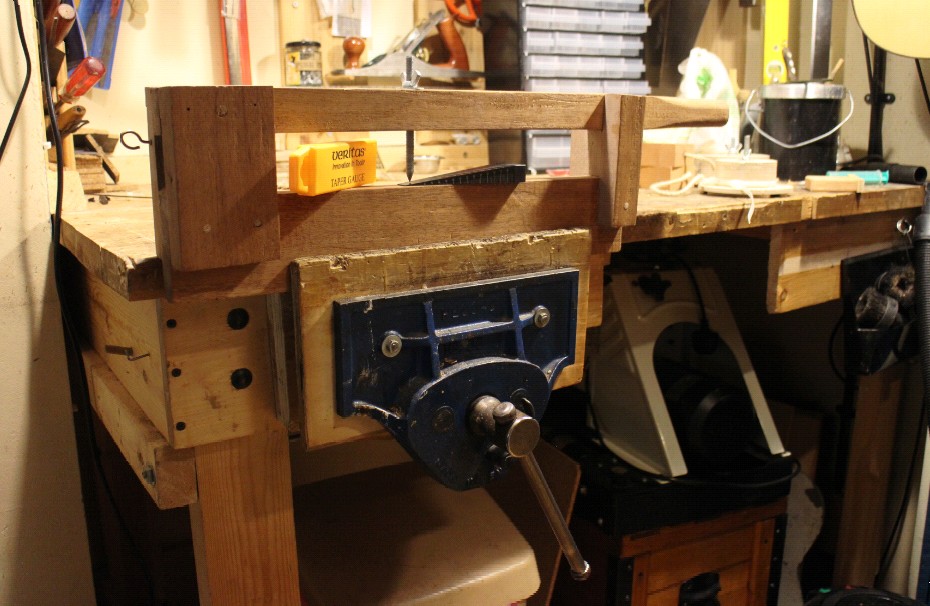
Images are resized automatically to a maximum width of 800px
 Attachment (1) Attachment (1)
|
|
|
|
REPORT THIS POST AS INAPPROPRIATE |
Date Jun. 29 2016 3:24:01
 |
|
 New Messages New Messages |
 No New Messages No New Messages |
 Hot Topic w/ New Messages Hot Topic w/ New Messages |
 Hot Topic w/o New Messages Hot Topic w/o New Messages |
 Locked w/ New Messages Locked w/ New Messages |
 Locked w/o New Messages Locked w/o New Messages |
|
 Post New Thread
Post New Thread
 Reply to Message
Reply to Message
 Post New Poll
Post New Poll
 Submit Vote
Submit Vote
 Delete My Own Post
Delete My Own Post
 Delete My Own Thread
Delete My Own Thread
 Rate Posts
Rate Posts
|
|
|
Forum Software powered by ASP Playground Advanced Edition 2.0.5
Copyright © 2000 - 2003 ASPPlayground.NET |
0.078125 secs.
|


 Printable Version
Printable Version



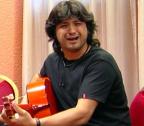

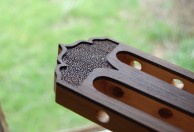





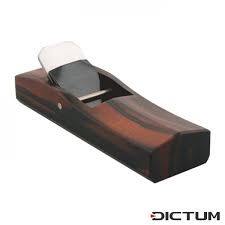


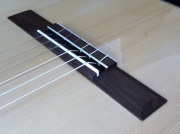
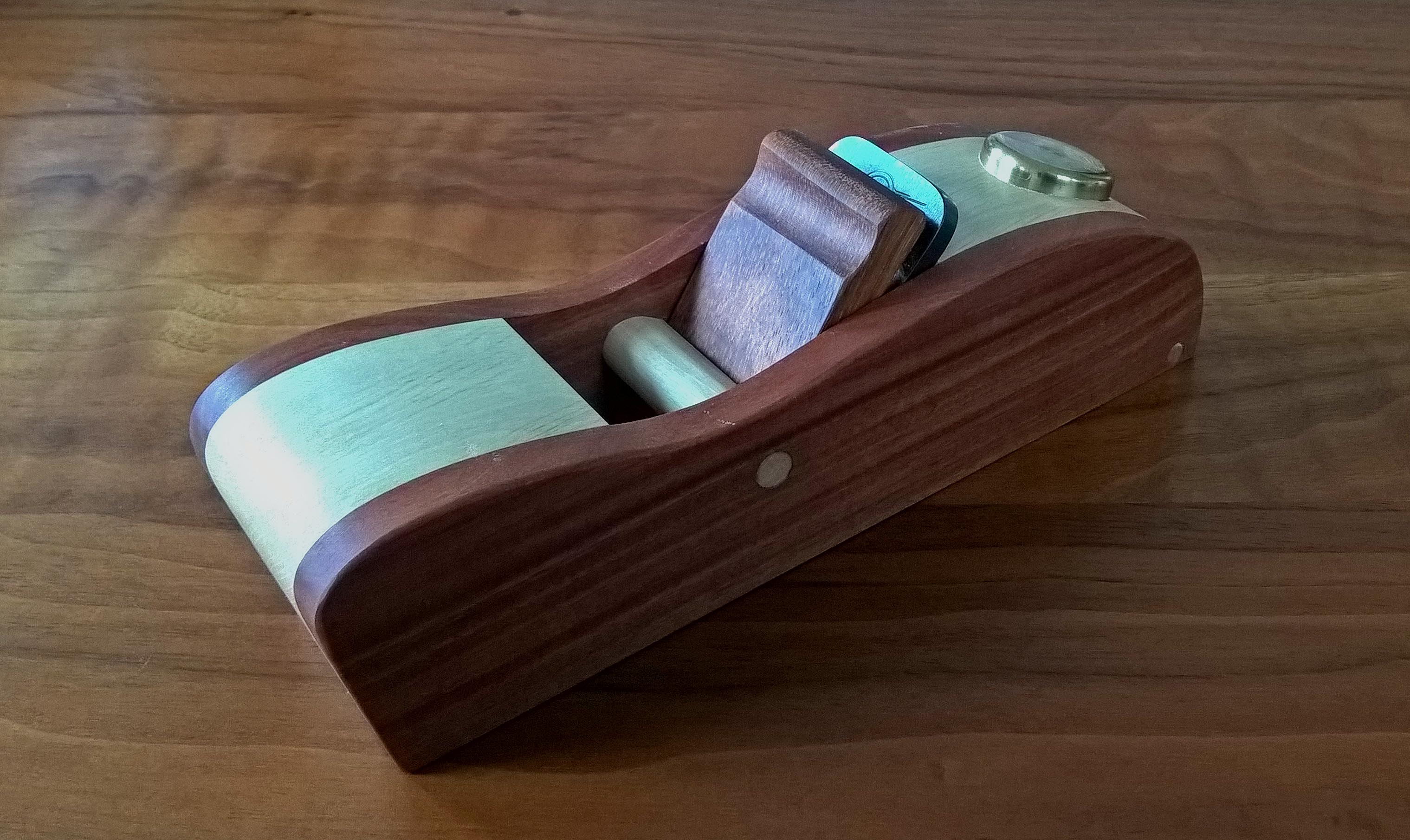

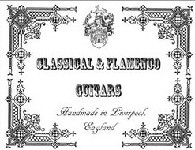

 New Messages
New Messages No New Messages
No New Messages Hot Topic w/ New Messages
Hot Topic w/ New Messages Hot Topic w/o New Messages
Hot Topic w/o New Messages Locked w/ New Messages
Locked w/ New Messages Locked w/o New Messages
Locked w/o New Messages Post New Thread
Post New Thread